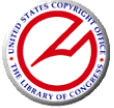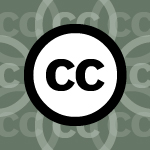        |
Conference on Fair Use (CONFU)The early 1990's: A brief history of the Fair Use Guidelines that never wereTechnorhetoricians have no Fair Use Guidelines. At least seven sets of educational guidelines exist on the Web (Heins & Beckles, 2005, pp. 6-7); however, none of them tend to the needs of technorhetoricians. “[I]n the interest of security and uniformity, [the guidelines] relinquish the breadth and flexibility of fair use, and undermine the educational process” (p. 7). While various institutions have "Guidelines" they've created for a limited audience (see Stanford University or University of Texas as examples ), as a group, we do not have one set of guidelines we can look to that allow us the freedom and protection we need. Maybe it is time we get together and create Fair Use Guidelines that are robust enough to support our practices as teachers, writers, and researchers writing in digital environments. An attempt at crafting such guidelines took place during the last ten years, alongside Kairos' development, but failed. Popping up in different places on the web is a discussion tracing the history of these imagined Fair Use Guidelines, never adopted, that predicted the dwindling hope of consensus between stakeholders in the copyright wars. (See Extended Background on the Negotiation Process for the Fair Use Guidelines [2002, Indiana University].) The history of the guidelines, both for educational use of photocopies and educational multimedia (re-mixing) activities and uses, is worthy of further exploration by those in rhetoric and composition. The reason is because vestiges of these guidelines that never were are present on a number of university websites and add to the widely circulating myths about "educational" Fair Use (myths such as using a certain percentage is acceptable, using for non-profit is alright, using a predetermined number of minutes for sound recordings is fine, etc.). What we need is accurate information about our Fair Use rights, rather than skimpy, impotent guidelines referring back to agreements as old as 1976 (see MSU's University Relations Fair Use Guidelines for a not uncommon example). What happened during the last ten years is that a large multiplicity of powerful organizations: government, educational institutions/organizations, industry and the copyright holder community tried to agree on Guidelines for Multimedia Educational Use. The Fair Use Guidelines for Educational Multimedia negotiations committee was convened by the Consortium of College and University Media Centers in June 1994. During negotiations, the Conference on Fair Use (CONFU) started. Somehow, the negotiations ended up solely within this conference. But, after several meetings and phases between 1997 and 1998, at which time some conference participants from educational and library organizations expressed strong opposition to continuing the guideline effort within CONFU, its subcommittees stopped meeting. The lack of consensus was finally recognized at the last CONFU plenary session on May 18, 1998. No further work was done on the Fair Use Guidelines. But, complicating the story, according to an Indiana University site, the Fair Use Guidelines for Educational Multimedia received "broad" endorsement from both the user and copyright holder communities. The Indiana site purported that the guidelines were adopted by the Subcommittee on Courts and Intellectual Property, Committee on the Judiciary, US House of Representatives in a nonlegislative report on September 27, 1996. But, another CONFU site (http://www.utsystem.edu/ogc/intellectualproperty/confu.htm) states that
However, remnants of these nonconsensual Fair Use Guidelines survive in multiple places on the web, especially through links located on university websites, and provide easy access to nonbinding guidelines to be used as "resources" by us and our students. Yet, there are no Fair Use Guidelines that have been widely adopted or sanctioned by all the copyright stakeholders. Due to the misinformation circulating on the web, perhaps it is time that readers and supporters of Kairos gather to craft such guidelines and create a resource of accurate information that supports our Fair Use rights. Marjorie Heins' December 2005 study on Fair Use ("Will Fair Use Survive?", free copies available for ordering on the Free Expression Policy Project website) supports the notion that artists and scholars are working under uncertain Fair Use rights and that uncertainty has a chilling effect on their composing practices. Thus, accurate information is desperately needed. Kairos and its readers should surely support such Fair Use Resource development and construction in light of our current political climate. We need to know where the boundaries are so that we can push on those boundaries. |
               |